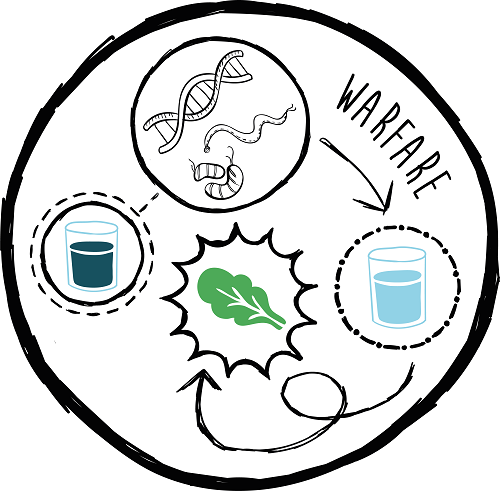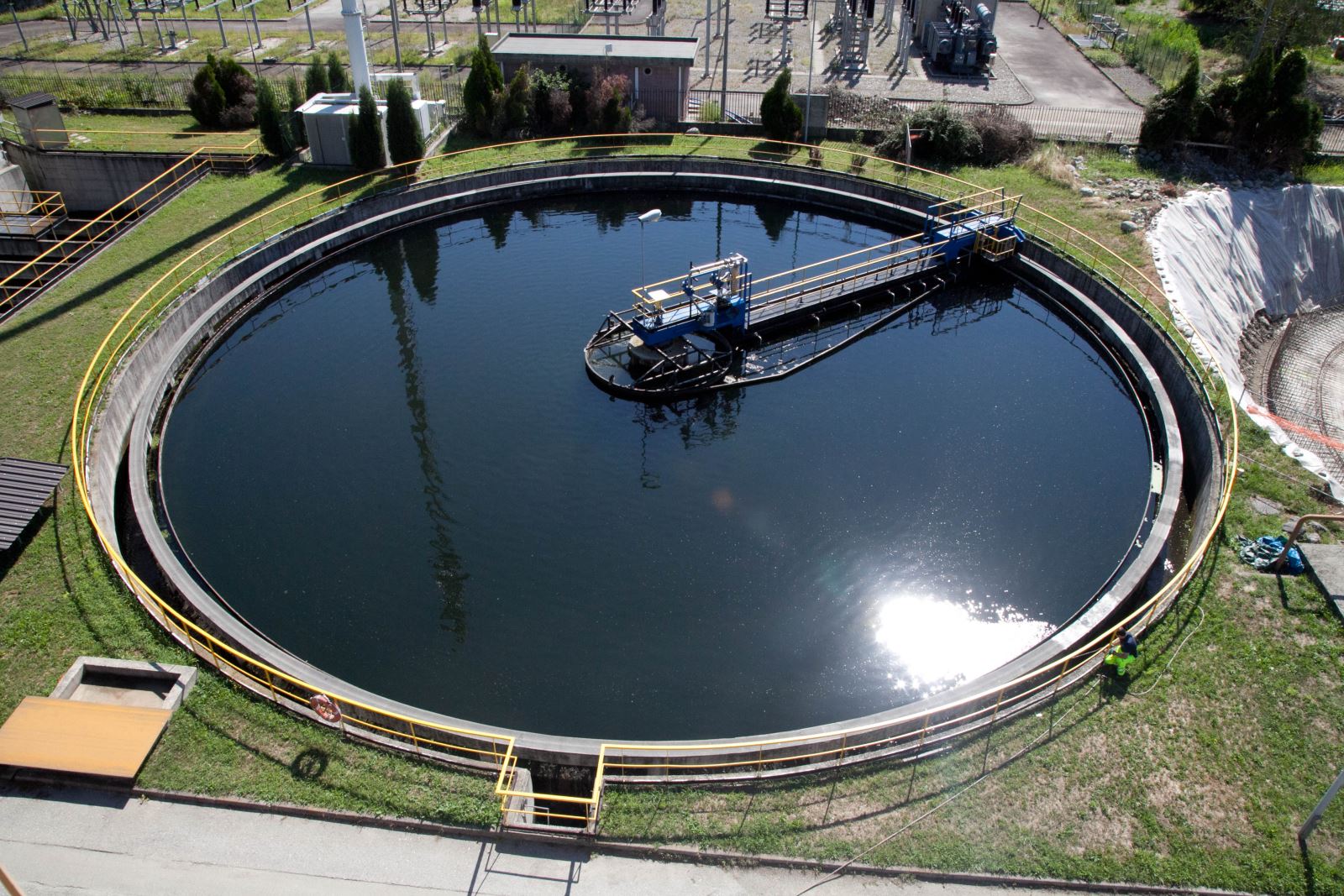 WARFARE Project
WARFARE Project
Novel wastewater disinfection treatments to mitigate the spread of antibiotic resistance in agriculture
 The MEG is leading the WARFARE Project, funded by CARIPLO Foundation, Circular Economy Call 2018, in collaboration with the groups of Francesca Mapelli and of Luigi Vezzulli from the University of Milan and the University of Genoa.
The MEG is leading the WARFARE Project, funded by CARIPLO Foundation, Circular Economy Call 2018, in collaboration with the groups of Francesca Mapelli and of Luigi Vezzulli from the University of Milan and the University of Genoa.
With WARFARE, we aim to develop and provide innovative tertiary treatments of wastewater to local managers, in order to fully remove the determinants of antibiotic resistance from wastewater reused in agriculture. We will specifically focus on the farming of vegetables used for raw consumption, including ready-to-eat products, using lettuce as model crop.
We will monitor the spread of ARGs and ARB from a medium size urban WWTP (Cremona, in collaboration with Padania Acque) discharging in a channel already used for irrigation. The quality of the effluents of this WWTP largely matches the parameters nowadays required for water reuse for irrigation purposes by the current legislation. We will then experimentally test the efficiency in removing ARB and ARGs of the current disinfection treatment applied in the Cremona WWTP (namely UV) in comparison to three new technologies, which are still not available on the market, or were never specifically tested in the removal of determinants of resistance: two Advanced Oxidation processes with different molecules (copper-based and iron-based) and filtration through innovative nano-porous membranes, in collaboration with the University of Turin (Davide Vione), the University of Salerno (Luigi Rizzo), and the Politechnical University of Turin (Davide Tiraferri).
 Moreover, we test the survival rates of selected ARB in the differently treated wastewaters, and in soil and edible plants irrigated by those waters. To achieve this goal, we will define the bacterial communities through full metagenome analyses (shotgun sequencing) in order to define the microbiota and the antibiotic resistomes of treated wastewaters disinfected by conventional and innovative methods. Further, we quantify the overall bacterial concentrations and will isolate environmental ARB. Selected isolates will be engineered by tagging with optical gene markers to make them identifiable and quantifiable within the overall bacterial communities associated with water, soil and plant. Finally, the results will be summarized and projected in a simulation of full-scale treatment plant, considering the different treatment costs and efficiencies, to select the best performing technologies in producing wastewater with controlled contamination by antibiotic resistance determinants.
Moreover, we test the survival rates of selected ARB in the differently treated wastewaters, and in soil and edible plants irrigated by those waters. To achieve this goal, we will define the bacterial communities through full metagenome analyses (shotgun sequencing) in order to define the microbiota and the antibiotic resistomes of treated wastewaters disinfected by conventional and innovative methods. Further, we quantify the overall bacterial concentrations and will isolate environmental ARB. Selected isolates will be engineered by tagging with optical gene markers to make them identifiable and quantifiable within the overall bacterial communities associated with water, soil and plant. Finally, the results will be summarized and projected in a simulation of full-scale treatment plant, considering the different treatment costs and efficiencies, to select the best performing technologies in producing wastewater with controlled contamination by antibiotic resistance determinants.
Updates on the project progresses are available on the WARFARE twitter account: ![]()
Publications from WARFARE:
Francesco Riva, Valentina Riva, Ester M Eckert, Noemi Colinas, Andrea Di Cesare, Sara Borin, Francesca Mapelli, Elena Crotti. 2020. An Environmental Escherichia coli Strain Is Naturally Competent to Acquire Exogenous DNA. Frontiers in Microbiology 11: 2131.
Valentina Riva, Francesco Riva, L Vergani, Elena Crotti, Sara Borin, Francesca Mapelli. 2020. Microbial assisted phytodepuration for water reclamation: Environmental benefits and threats. Chemosphere 241: 124843
Andrea Di Cesare, Marco De Carluccio, Ester M Eckert, Diego Fontaneto, Antonino Fiorentino, Gianluca Corno, Prisco Prete, Raffaele Cucciniello, Antonio Proto, Luigi Rizzo. 2020. Combination of flow cytometry and molecular analysis to monitor the effect of UVC/H2O2 vs UVC/H2O2/Cu-IDS processes on pathogens and antibiotic resistant genes in secondary wastewater effluents. Water Research 184: 116194